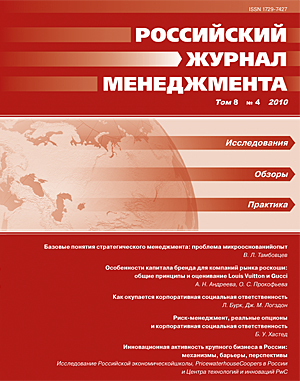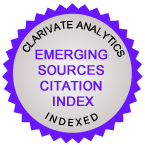The Basic Notions of Strategic Management: Problem of Micro-Foundations
Abstract
The principles of the strategic management micro-foundations project’s (T. Felin & N. Foss, 2005) are developed. On this basis, solution of the routines emergence’s problem is proposed, structure of the notion “organizational capability” is developed, and micro-foundations of dynamic
capabilities (D. Teece, 2007) are critically analyzed.
Keywords:
micro-foundations, routines, organizational capabilities, dynamic capabilities
Downloads
References
REFERENCES IN LATIN ALPHABET
Downloads
Published
How to Cite
Issue
Section
License
Articles of the Russian Management Journal are open access distributed under the terms of the License Agreement with Saint Petersburg State University, which permits to the authors unrestricted distribution and self-archiving free of charge.





